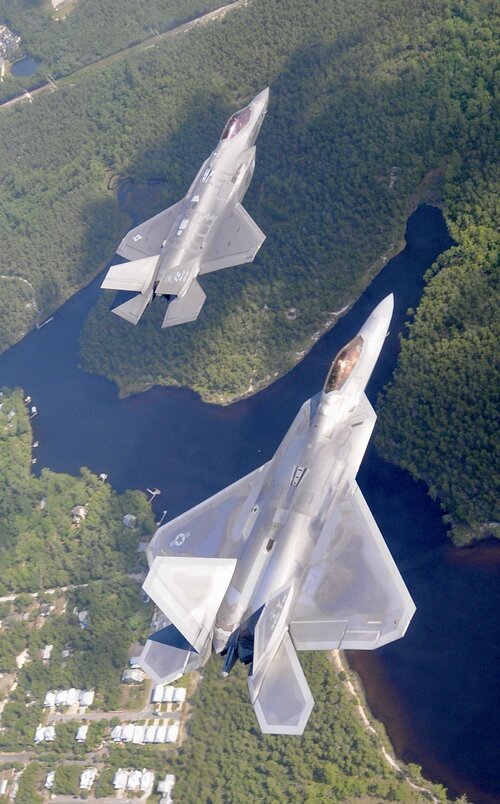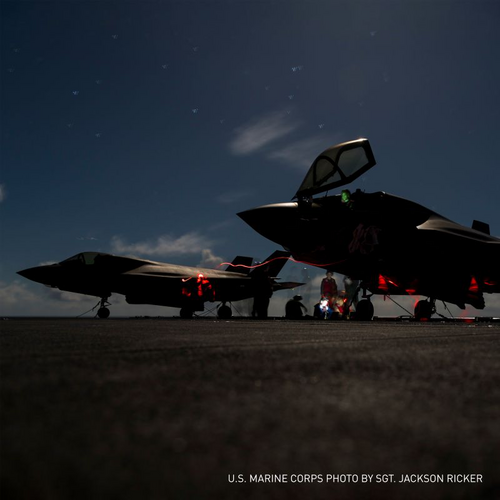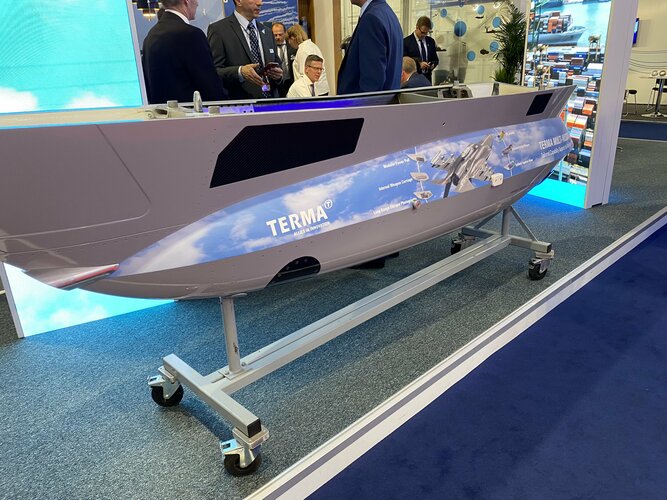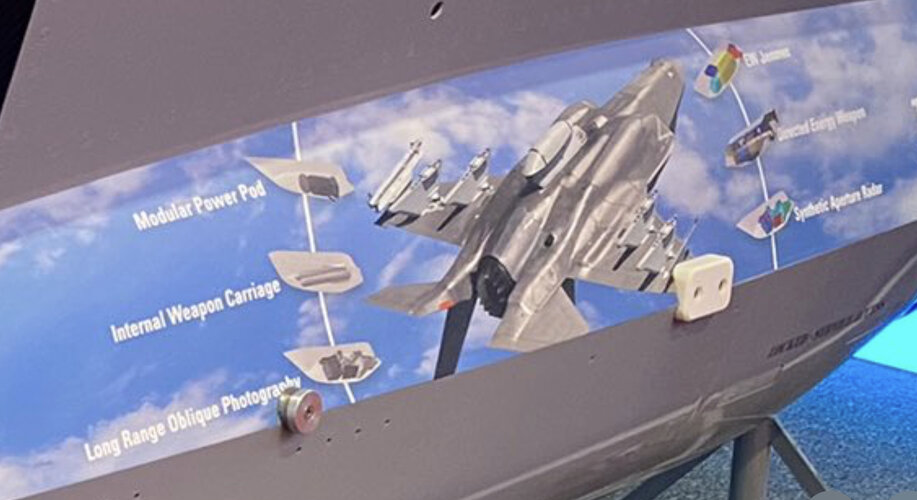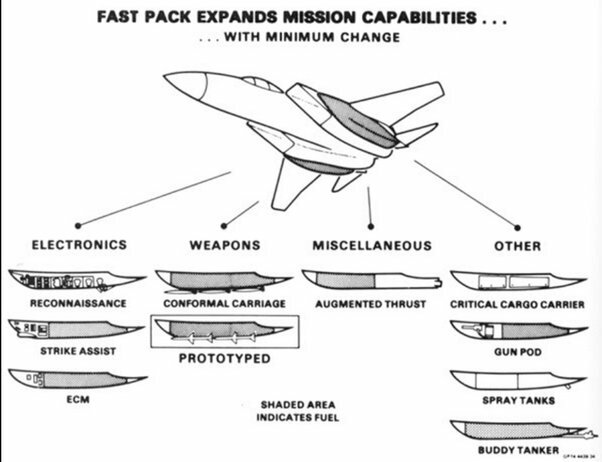The F-35 engine is at a crossroads, with billions of dollars for industry at stake
By Stephen Losey
Friday, Jul 15
WASHINGTON — The Pentagon and industry agree the F-35 engine needs improvements. But despite years of development and debate, the path forward isn’t yet clear.
With the fifth-generation fighter’s missile capacity, electronic warfare, and targeting systems advancing beyond what was originally conceived, and the U.S. Air Force concerned about the potential for war against China, the service is planning to put more power and cooling ability on the F-35.
But there remain multiple options for how to get there. One approach is making a series of upgrades to the existing Pratt & Whitney-made F135 engine currently powering the F-35 through the Enhanced Engine Program.
Another potential path is an entirely new replacement engine using cutting-edge technology such as a third stream of air to improve fuel efficiency and thrust. Pratt & Whitney and General Electric Aviation have each developed competing versions as part of the Adaptive Engine Transition Program, known as AETP.
Officials from the Air Force and Defense Department so far have not decided whether the F-35 will receive a new adaptive engine or an upgraded F135. But within the next year, the companies expect the military’s future plans to come into focus.
The military’s decision will determine the future power and propulsion capabilities of the cornerstone of the Air Force’s fighter fleet — not to mention where billions of defense dollars will ultimately go.
The companies have different views on whether an adaptive engine is right for the F-35. GE Aviation says the XA100 — its version of the adaptive engine — would dramatically improve the jet’s thrust, speed, range and heat management, giving it the ability to handle more advanced systems.
But while Pratt & Whitney stands by its work on its XA101 adaptive engine, even envisioning it will power the Air Force’s in-development Next Generation Air Dominance platform, company officials maintain it’s a mistake to put a completely new engine in a single-engine fighter.
If a new adaptive engine on the single-engine F-35 were to fail midair, Pratt & Whitney says, the plane and pilot could be put in danger. And if a problem is discovered on the ground, the company warns, that could sideline a crucial portion of the Air Force’s fighter fleet until there’s a fix, dealing a blow to combat readiness.
Pratt & Whitney says upgrades to the existing engine would entail fewer new factors and less risk, and a souped-up version would still have an improved core to provide added power, thrust, range and cooling.
But the officials in charge of the F-35 have to make a decision one way or the other, Dan Grazier, a military analyst for the Project on Government Oversight and critic of the program, told Defense News — and the program can’t afford to wait.
“The longer they hold off this decision, the more F-35s are going to be built that are going to need to be modified to handle these engines,” Grazier said. “The sooner they can make the decision about this, the better off everyone’s really going to be because any delay is going to drive up future costs.”
Running hot
The F-35′s thermal management requirements have grown considerably since its early days, when the current F135 propulsion system was designed. As the fighter reaches its full Block 4 capability — which the Government Accountability Office now expects in 2029 — the fighter will run hotter, necessitating greater cooling capabilities.
The Block 4 upgrades that will drive the F-35′s increased cooling needs will include advanced electronic warfare capabilities, improved target recognition and the ability to carry more missiles, among other features.
In an April hearing before the House Armed Services Committee, Air Force Secretary Frank Kendall said the AETP engine, while still several years away from full development, could produce a 20-25% boost in performance and significant cost savings.
“It would be a substantial improvement over the current capability,” Kendall said. “The AETP engine would offer increased power, which we’re going to need as we continue to modernize the F-35. … And we’re going to have a very large inventory of F-35s. So the fuel savings that we could accomplish through that engine would be a significant payoff.”
In a late June roundtable with reporters at the Pentagon, Air Force acquisition chief Andrew Hunter praised the progress both GE and Pratt & Whitney have made on their adaptive engines, describing early test results as “very encouraging.”
“The advantages in power, thermal management and fuel efficiency that we were looking for are being demonstrated in the test program,” Hunter said.
Hunter added that the capabilities AETP originally intended to provide — such as increased range and a better ability to manage high temperatures while running advanced electronics — are turning out to be exactly what the F-35 would need in a fight against China.
The Biden administration’s most recent National Defense Strategy continues to list China — with its modernized military and advanced capabilities like hypersonic weapons — as the top threat facing the United States, calling it “our most consequential strategic competitor” in a public summary of the classified document. It also lists Russia as posing “acute threats.”
Two key studies are underway to help determine the path forward on the F-35′s future engine. The F-35 Joint Program Office, with help from the Air Force, Navy and Marine Corps, is conducting a business case assessment examining available and proposed engine and power thermal management system options, which could provide the desired cooling capabilities.
That study, expected to conclude by August, will evaluate the cost, schedule, performance and technical risks of each option so both U.S. service leaders and officials from partner nations flying the F-35 can make a decision.
Chief Petty Officer Matthew Olay, a spokesman for the F-35 Joint Program Office, said its propulsion program management office will brief the fighter’s Joint Executive Steering Board on the study’s findings this fall. But he said it’s not yet clear when a final decision will be made.
The Air Force is also conducting a complementary operational assessment, meant to feed into the broader study, that looks at how those different solutions might play out in an actual combat situation. The Air Force briefed officials on the study’s initial findings in May, and it is expected to conclude in September.
“If a solution yields additional range or endurance or payload, the question is: What does that actually mean in a war?” Lt. Gen. Eric Fick, the former F-35 joint program executive officer, said about the Air Force’s operational assessment during another April hearing, before a House Armed Services Committee panel. “What does that actually mean in the Asia-Pacific [region] when it comes to actually employing this system in combat?”
The Air Force also this year sought to gather information that could lay the groundwork for the adoption of an adaptive engine into the F-35. In January, the service released a request for information on the F-35 Adaptive Engine Replacement Program, with a target of entering low-rate initial production in 2028.
This RFI asked potential vendors how they would provide a new adaptive engine for the jet. Submissions had to identify potential supply chain snags, ways to handle potential risks, top cost drivers and how the contractor would reduce expenses.
But if the Air Force takes the AETP route, Kendall told House lawmakers, it would entirely replace the F135, meaning there wouldn’t be a secondary engine type in the F-35A’s inventory.
Kendall said the cost to fully develop AETP and enter production could top $6 billion.
Pratt & Whitney said its Enhanced Engine Upgrades to the F135 can get the job done for far cheaper, at about one-third of AETP’s development cost. Pratt & Whitney forecasts the upgraded engines would cost the same to produce as an F135 and could save up to $40 billion in lifecycle costs.
Industry pitches
Jen Latka, Pratt & Whitney’s vice president for the F135 engine program, said the company will watch the next meeting of the F-35 Joint Executive Steering Board this fall for clues to the future of the fighter’s engine.
“Decisions are going to need to be made relatively shortly on the funding streams in the [Future Years Defense Program spending projections],” Latka told Defense News in a June 6 interview, “because we are late to need with this. It’s got to be built into the budget.”
In a June 21 interview at GE Aviation’s D.C. office, the vice president for advanced combat engine programs said next year’s release of the fiscal 2024 budget proposal will be telling.
“That will be a very important document to see where the Air Force and where the [Office of the Secretary of Defense] wants to go with this,” Dave Tweedie told Defense News.
Both companies are touting the expected improvements their preferred propulsion system would provide.
Pratt & Whitney said its approach to the Enhanced Engine Program, which would upgrade the F135, can allow full Block 4 capability, yield a more than 10% increase in thrust and range, and provide a more than 50% improvement in thermal capacity.
Tweedie said GE’s XA100 engine is able to offer 25% more fuel efficiency than the current F135, which would increase the range of an F-35 by 30%. He also said it could provide 10-20% more thrust, which would lead to 25-40% greater acceleration and twice the thermal management.
“Do you want something that can provide transformational capability that’s operationally relevant for years and decades to come?” Tweedie said. “Not just an incrementalist approach that can solve the next five years’ problems?”
Tweedie said the XA100 engine has three elements that allow it to achieve those capabilities. One is an adaptive cycle that allows it to “flex seamlessly” to the configuration that provides the most thrust and efficiency for a given situation.
It also has a third stream of air that serves to cool both the engine and the jet — a feature that has not previously existed in aircraft engines.
And lastly, GE’s adaptive engine uses new advanced materials and manufacturing technologies; the engine moves away from the traditional nickel-based superalloy and instead uses ceramic matrix composites for the turbines and other components that can withstand the thousands of degrees in which these engines run.
Those composites are one-third the weight of the traditional alloys, Tweedie said, and can withstand hundreds more degrees.
“When you run engines hotter, that’s how you get more performance out of them,” Tweedie said. “But at the same time, at those higher temperatures and higher performance, [the composites are] providing improved durability versus nickel-based alloys.”
Tweedie also said the engine makes greater use of additive manufacturing, or 3D printing, which allows its engineers to craft components that couldn’t be made with traditional fabrication techniques.
Pratt & Whitney acknowledges there can be value in advancements like ceramic matrix composites, but the company doesn’t think introducing a very different material into the F-35 is the right move.
“When you go to field, you’re going to learn things on any new technology, not just engines,” Latka said. “With engines, it’s a problem to learn something because you’re powering that thing up in the air. When you have a single-engine fighter, the safety standards are different. Because if that engine has a hiccup and shuts down, you lose the aircraft and you put the pilot in danger.”
Cost and variant concerns
Latka also pointed to cost and sustainment considerations when it comes to putting a new adaptive engine in the single-engine F-35.
“If you have two engine configurations out there, you need to have two sustainment infrastructures to support them,” Latka said. “That doesn’t just mean facilities — different depots, different support equipment. It also means two different sustainment engineering organizations because you’re managing multiple configurations. It means tooling, support equipment, training, repairs — all of that has to be somewhat duplicated.”
Tweedie said GE’s adaptive engine could help bring the F-35′s sustainment costs under control. “When you start saving 25% fuel burn and you start moving the needle on durability, that can really translate into life-cycle cost savings over the long term.”
But there’s an issue that could drive up the costs of an adaptive engine: The current offerings don’t fit in all three versions of the F-35.
GE and Pratt & Whitney’s adaptive engines will fit in the F-35A, which the Air Force flies. GE said its engine will also fit in the F-35C aircraft carrier variant, which the Navy and the Marine Corps operate. But the engines currently wouldn’t work in the Marines’ F-35B short-takeoff-and-vertical-landing aircraft.
Pratt & Whitney said all three F-35 variants could adopt the upgraded F135 under the Enhanced Engine Program, or EEP, requiring minimal testing and changes to the airframe for integration.
Greg Hayes, chief executive of Raytheon Technologies, which owns Pratt & Whitney, raised doubts last fall the Air Force could afford the development of an adaptive engine given the variant restrictions.
Fick has also expressed skepticism about whether an adaptive engine could work in F-35s other than the “A” model, which would mean the Air Force would have to shoulder its full cost. Air Force Magazine reported in September Fick said an AETP engine would “require significant modifications” to fit in an F-35C, and called it “completely a non-starter” for the F-35B.
But Tweedie said that’s a solvable issue, and GE is now trying to figure out how to create a version of the adaptive engine that would fit in an F-35B. An engineering study on an adaptive F-35B engine is underway with the Marine Corps, he said, in hopes it yields information on potential performance by this fall.
“It’s not a ‘can we’ [question], it’s ‘how good can we do with it?’ ” Tweedie said.
Pratt & Whitney said its F135 is capable of handling the power needs of the F-35′s Block 4 upgrades — but that they’ll push its cooling capabilities well beyond the original specifications. Latka said the power thermal management system on the F135 is now operating at twice what it was designed for.
And when an engine needs to do more, it runs hotter, which leads to more maintenance needs and increased life-cycle costs. “That engine is doing everything that a pilot would need it to do,” Latka said. “It’s a cost issue, not a capability issue.”
That’s why the F135 — which remains essentially unchanged from the early days of the F-35 program — requires modernization work as part of EEP, Latka said.
“To enable Block 4 for the future threat, there is a requirement for [a power thermal management system],” Latka said. “But you would never put a new engine in to meet that [cooling] requirement. There [are] a lot easier, less costly, less disruptive solutions to meet that requirement.”
The adaptive engine’s third stream of air is impressive technology, she said — but it’s not the only technology that can be used to create more efficiencies in the F-35. The EEP’s improved core generates more fuel efficiency in the F135, she said — not as much as the adaptive engine, but still a significant increase.
“We’re already well on our way to bringing this technology to bear in the market,” Latka added.
Pratt & Whitney said it expects to finish testing its XA101 adaptive engine in 2023, and that tests so far show the technology is meeting performance goals.
Tweedie said GE built and tested two full-scale prototype XA100 engines, with one fired up for the first time in late December 2020 at its Evendale, Ohio, facility near Cincinnati. Tests on that engine, including some at altitudes above sea level, continued for the first three months of 2021.
GE launched the first phase of tests on the other prototype at the Evendale facility in August 2021, which ran through November. This focused primarily on structural and mechanical testing, Tweedie said, and started to look at the engine’s performance.
That engine is now undergoing a second testing phase at Arnold Engineering Development Complex on Arnold Air Force Base in Tennessee, where tests more closely resemble flight conditions and more precisely measure results than at GE’s own facility. Those tests, involving teams from GE, the Air Force Life Cycle Management Center and Arnold AFB, began March 25 and are expected to finish by the end of the summer.
Tweedie said the current tests run the engine through several different conditions it might encounter in flight, such as differing altitudes and power settings, to determine how it would perform in a variety of scenarios. He said the tests already proved the XA100 can provide additional fuel efficiency, thrust and other performance capabilities for which it was designed.
The more precise studies underway at Arnold AFB will produce the finetuned data that would be necessary for design work, should the system move into an engineering and manufacturing development phase, he said.
“The fundamental question of: ‘Does this technology work? Is it mature?’ We’ve kind of answered that question,” Tweedie said. “Which is why I think you start to see a lot more serious discussion, certainly publicly but also in private, about what are the next steps for moving forward with this technology?”
In the fiscal 2022 spending bill, lawmakers dramatically boosted the Air Force’s original AETP funding request of almost $124 million by $460 million, bringing the total approved spending to about $584 million.(Saul Loeb/AFP via Getty Images)
Tweedie said GE expects the Air Force to move forward with AETP, citing its funding request for $286 million in fiscal 2023 for the program.
And Congress has thrown its checkbook behind the effort. In the FY22 spending bill, lawmakers dramatically boosted the service’s original AETP funding request of almost $124 million by $460 million, bringing the total approved spending to about $584 million.
But to Grazier, the complications and years-long debate over the F-35′s engine show the “direct consequence of those decisions” made when the Joint Strike Fighter concept was sketched out more than two decades ago.
The problem with the F-35 variants, and the likelihood that an adaptive engine wouldn’t work for all three, “is one of the best arguments against having a joint program like the F-35,” he said. Different services have different missions and needs for their fighters, he said, and trying to create one common airframe that applies to each has drastically increased the complexity and costs of the program.
“It would have been great if these concepts had been fully sussed out during testing, before we started buying hundreds and hundreds of F-35s,” Grazier said. “We’re kind of reaping what we sowed back in the 1990s.”

www.reuters.com




